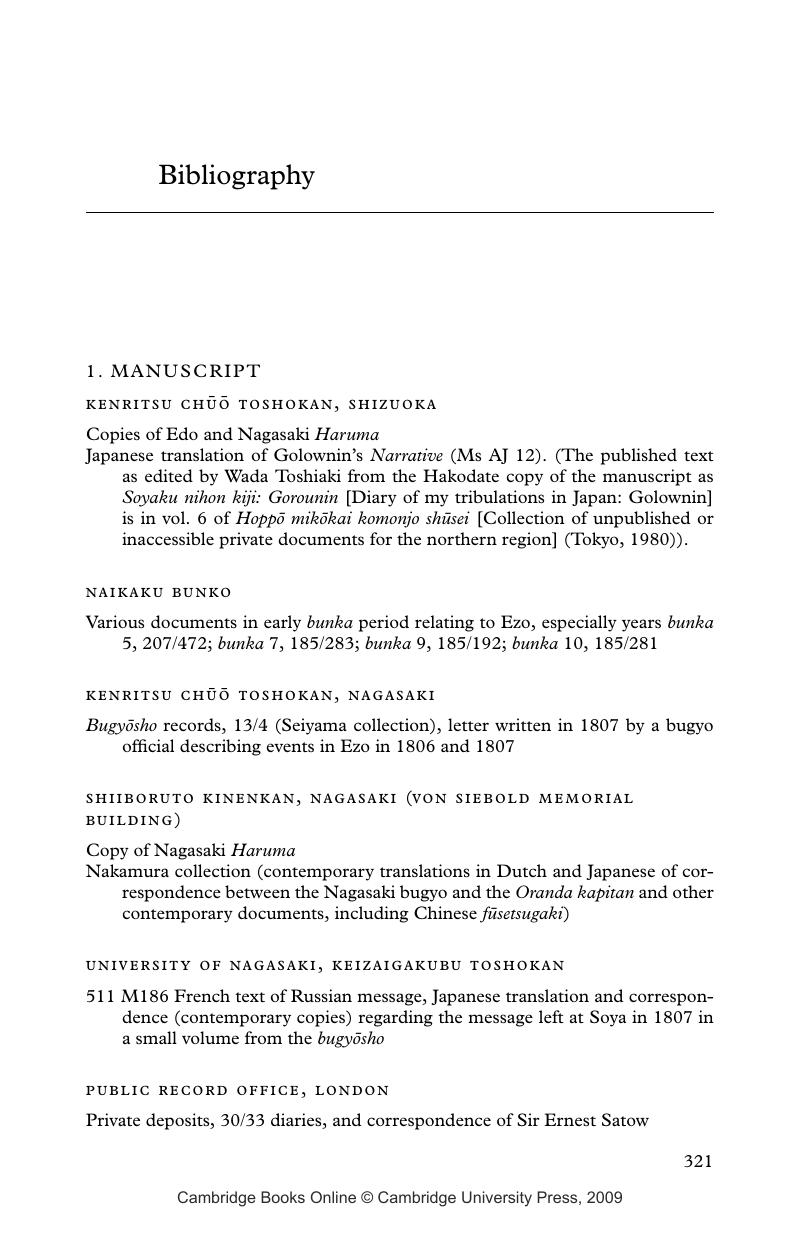Book contents
- Frontmatter
- Contents
- List of maps
- Preface
- Conventions
- List of abbreviations
- Map 1 Geographical regions of Japan (the shaded Kinai is a subregion of Kinki)
- 1 Introduction: Japan's internal and external worlds, 1582–1941
- 2 Japan and its Chinese and European worlds, 1582–1689
- 3 The Japanese economy, 1688–1789
- 4 An age of stability: Japan's internal world, 1709–1783, in perspective
- 5 Prosperity amid crises, 1789–1853
- 6 Sakoku under pressure: the gaiatsu of the 1850s and 1860s
- 7 Fashioning a state and a foreign policy: Japan 1868–1919
- 8 From peace (Versailles 1919) to war (Pearl Harbor 1941)
- Tokugawa shoguns
- Main regnal periods
- Glossary
- Introduction to bibliography
- Bibliography
- Index
- References
Bibliography
Published online by Cambridge University Press: 14 January 2010
- Frontmatter
- Contents
- List of maps
- Preface
- Conventions
- List of abbreviations
- Map 1 Geographical regions of Japan (the shaded Kinai is a subregion of Kinki)
- 1 Introduction: Japan's internal and external worlds, 1582–1941
- 2 Japan and its Chinese and European worlds, 1582–1689
- 3 The Japanese economy, 1688–1789
- 4 An age of stability: Japan's internal world, 1709–1783, in perspective
- 5 Prosperity amid crises, 1789–1853
- 6 Sakoku under pressure: the gaiatsu of the 1850s and 1860s
- 7 Fashioning a state and a foreign policy: Japan 1868–1919
- 8 From peace (Versailles 1919) to war (Pearl Harbor 1941)
- Tokugawa shoguns
- Main regnal periods
- Glossary
- Introduction to bibliography
- Bibliography
- Index
- References
Summary

- Type
- Chapter
- Information
- A History of Japan, 1582–1941Internal and External Worlds, pp. 321 - 345Publisher: Cambridge University PressPrint publication year: 2003



